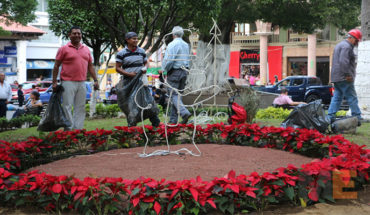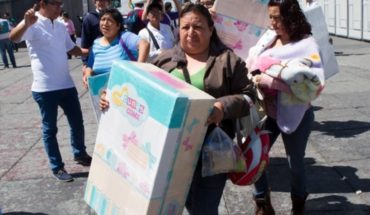Minimizing the violence and saying that there was not as much as the media spread it can fool fools or be a mythomaniac deviation. To repeat President Andrés Manuel López Obrador and his security cabinet that the dead, blockades and burned vehicles are limited to acts of organized crime propaganda, as well as reductionist, is not wanting to see the size of the problem they face, because what happened in four states has to do with realignments and internal struggles between the cartels, who fight and dispute territories in the deliberate absence of the federal government to prevent it.
The violence -in order of appearance- in Jalisco, Guanajuato, Chihuahua and Baja California was not organized by the Government to justify the assignment of the National Guard to the Ministry of Defense, nor of its opponents so that, through fear, they destabilize it. Neither the former has the talent to do it, nor the latter the ability to achieve it. The criminal fury was a coincidence in time that united four states, but with different dynamics that responded to the recomposition of the cartels and the search for new places.
The episode that drew the most attention for the direct attacks on the civilian population occurred in Ciudad Juárez, where violence was unleashed by Los Mexicles after three of its members were killed inside the local prison. The Mexicles work for the Caborca Cartel, which rafael Caro Quintero continues to lead from prison, who reacted in this way – which the government identifies only as propaganda – to the attempts of the chapitos, the sons of Joaquín “el Chapo” Guzmán, who are part of one of the factions of the Sinaloa Cartel, who seek to take over Ciudad Juárez.
It would seem a contradiction that Los Mexicles, who control the square and all its infrastructure, unleashed a wave of 11 murders of civilians in a single day, because that, in criminal jargon, “heats” the square and harms those who dominate it. But according to government sources, the strategy of that group was to sharpen the contradictions of violence, to provoke the government to send federal forces with which the chapitos and the Sinaloa Cartel had more difficulty operating and sending militias to that city, where their logistics are limited.
The violence in Ciudad Juárez has nothing to do with the one that broke out days before in Guadalajara and Guanajuato, after Army units carried out a terrible operation to arrest Ricardo Ruiz Velasco, the Double RR, military chief of the Jalisco New Generation Cartel (CJNG), in the metropolitan area of the capital of Tapatia. The Double RR “is on the loose,” government officials revealed, as are several senior officials of that organization in the face of the weakness of the leadership of Nemesio Oseguera, “el Mencho”, due to the deterioration in his health, with advanced diabetes and high tension.
The Doble RR is at odds with Hugo González Gaytán, “el Sapo,” who controls Puerto Vallarta, the CJNG’s stronghold, and is allegedly responsible for the murder of former Jalisco governor Aristóteles Sandoval. El Sapo is one of Mencho’s main lieutenants, as is Audías Flores Silva, “the Gardener,” considered by the United States as the cartel’s number two, but who, in these times of turbulence within the organization, government sources added, has “locked himself up” in Nayarit.
The decline in the strength of El Mencho detonated disputes within the organization by losing authority over his lieutenants, in particular “la Vaca”, as they say to José Bernabé Brizuela, who manages his own criminal gang in Colima, Los Mezcales, and who is credited with the attack against the Secretary of Security of Mexico City, Omar García Harfuch, just over two years ago. It also led to the rebellion of the Elite Group, headed by Juan Carlos González, “the 0-3”, which took custody of the relatives of the CJNG leaders from the Sierra Birds, who are credited with the famous massacre at a funeral home in San José de Gracia, Michoacán, in February.
The failed operation against the Doble RR provoked an immediate reaction in Guanajuato, where it also dominates the square, but as the officials explained, it was a message – the propaganda pointed out by the president and the security cabinet – of control in the entity, in order to neutralize the perceptions of weakness -by showing muscle-, due to the setbacks suffered with the Sinaloa Cartel in Zacatecas.
The CJNG resembles in that sense the Zetas, who began with criminal propaganda in 2005, imitating what al Qaeda did, to inject fear among their rivals because of the savage nature of their executions, which videotapedthey were spreading. The two organizations operate with the criminal business model of causing terror by mass violence, unlike the Sinaloa Cartel which exercises it in a more discreet way.
But neither Jalisco, Guanajuato nor Chihuahua are related to the type of violence that was experienced in Baja California, particularly in Tijuana, where the CJNG has wanted to set up fentanyl narco-laboratories, without much success because they have been dismantled by the authorities. Also the Sinaloa Cartel, which controls the square, is in that branch of the criminal business, where extortion and the collection of floor rights is the main cause attributable to the violence unleashed in Baja California. The authorities have pointed to Javier Beltrán Cabrera, “el Javi”, head of the Los Erres cell, as responsible for it.
The internal recomposition of the CJNG, with the disputes over the serious illness of El Mencho, has shown its effects in the center of the country, while in several cities of the northern border war fronts have been opened with the Sinaloa Cartel, in particular the chapitos, with an enemy of both, the criminal organization of Caro Quintero. Although they use propaganda as a tool of violence, it neither begins nor ends there. It is much more complex than the government explained.
Original source in Spanish
Make no mistake, President
August 17, 2022 |





